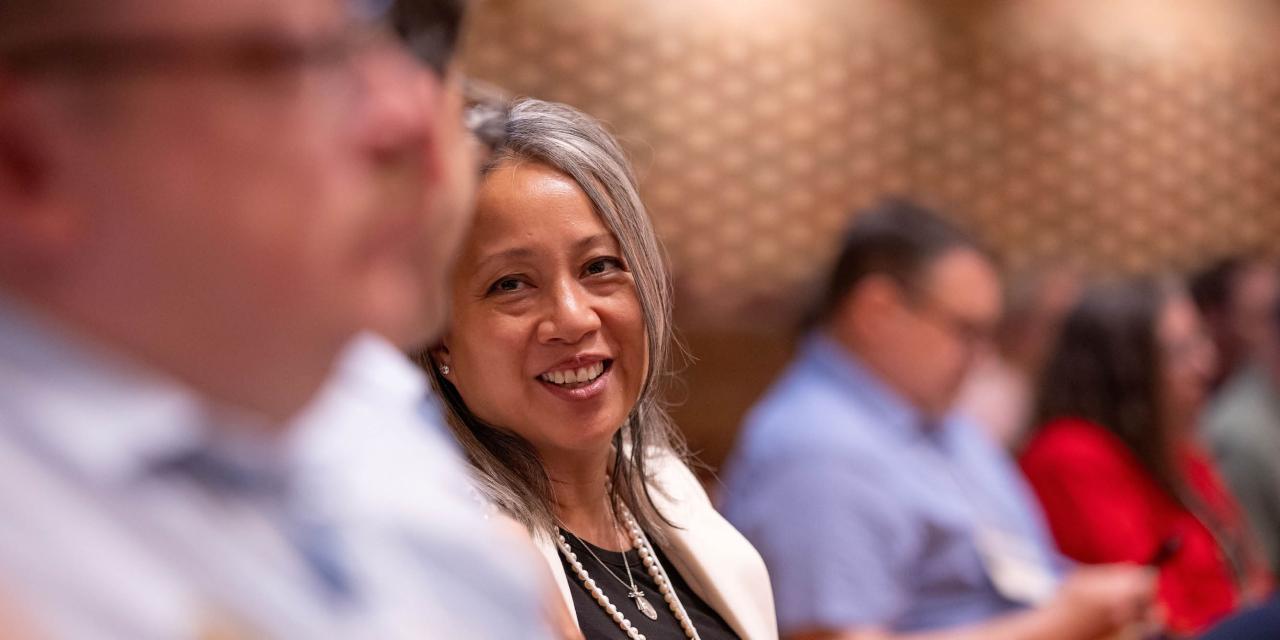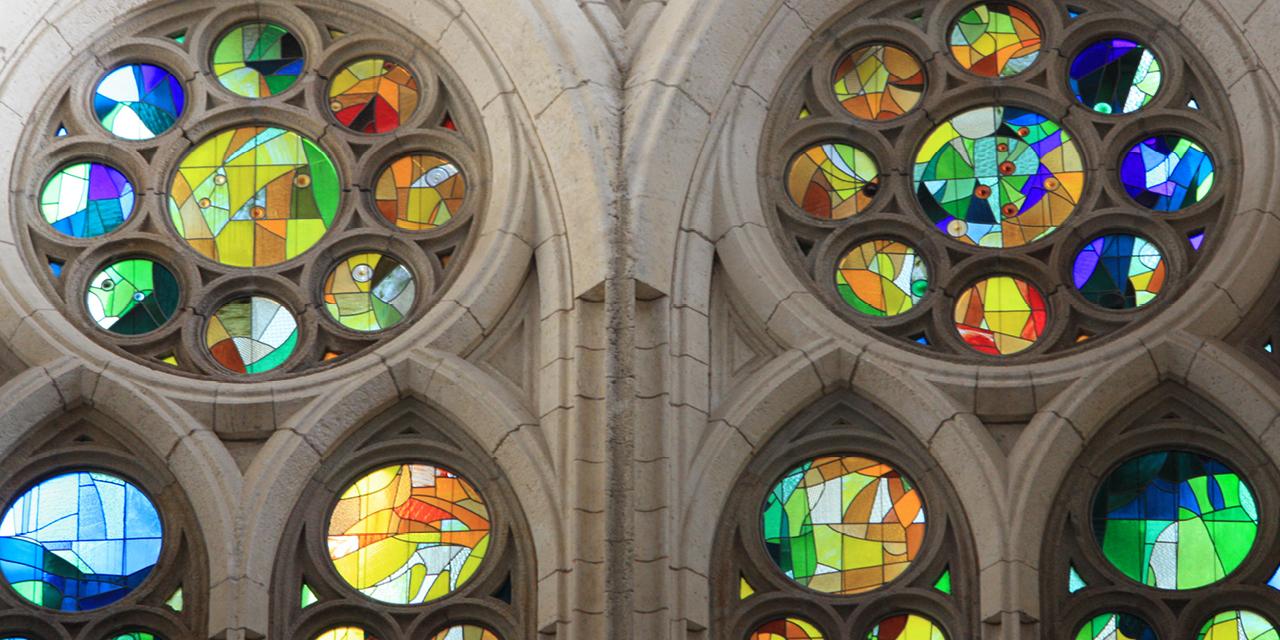Contemporary Challenges and Opportunities
This statement is from the third international consultation of the Lutheran World Federation's Study Team on Worship and Culture, held in
1. Introduction
1.1. Worship is the heart and pulse of the Christian Church. In worship we celebrate together God's gracious gifts of creation and salvation, and are strengthened to live in response to God's grace. Worship always involves actions, not merely words. To consider worship is to consider music, art, and architecture, as well as liturgy and preaching.
1.2. The reality that Christian worship is always celebrated in a given local cultural setting draws our attention to the dynamics between worship and the world's many local cultures.
1.3 Christian worship relates dynamically to culture in at least four ways. First, it is transcultural, the same substance for everyone everywhere, beyond culture. Second, it is contextual, varying according to the local situation (both nature and culture). Third, it is counter-cultural, challenging what is contrary to the Gospel in a given culture. Fourth, it is cross-cultural, making possible sharing between different local cultures. In all four dynamics, there are helpful principles which can be identified.
2. Worship as Transcultural
2.1. The resurrected Christ whom we worship, and through whom by the power of the Holy Spirit we know the grace of the Triune God, transcends and indeed is beyond all cultures. In the mystery of his resurrection is the source of the transcultural nature of Christian worship. Baptism and Eucharist, the sacraments of Christ's death and resurrection, were given by God for all the world. There is one Bible, translated into many tongues, and biblical preaching of Christ's death and resurrection has been sent into all the world. The fundamental shape of the principal Sunday act of Christian worship, the Eucharist or Holy Communion, is shared across cultures: the people gather, the Word of God is proclaimed, the people intercede for the needs of the Church and the world, the eucharistic meal is shared, and the people are sent out into the world for mission. The great narratives of Christ's birth, death, resurrection, and sending of the Spirit, and our Baptism into him, provide the central meanings of the transcultural times of the church's year: especially Lent/Easter/Pentecost, and, to a lesser extent, Advent/Christmas/Epiphany. The ways in which the shapes of the Sunday Eucharist and the church year are expressed vary by culture, but their meanings and fundamental structure are shared around the globe. There is one Lord, one faith, one Baptism, one Eucharist.
2.2. Several specific elements of Christian liturgy are also transcultural, e.g., readings from the Bible (although of course the translations vary), the ecumenical creeds and the Our Father, and Baptism in water in the Triune Name.
2.3. The use of this shared core liturgical structure and these shared liturgical elements in local congregational worship -- as well as the shared act of people assembling together, and the shared provision of diverse leadership in that assembly (although the space for the assembly and the manner of the leadership vary) -- are expressions of Christian unity across time, space, culture, and confession. The recovery in each congregation of the clear centrality of these transcultural and ecumenical elements renews the sense of this Christian unity and gives all churches a solid basis for authentic contextualization.
3. Worship as Contextual
3.1. Jesus whom we worship was born into a specific culture of the world. In the mystery of his incarnation are the model and the mandate for the contextualization of Christian worship. God can be and is encountered in the local cultures of our world. A given culture's values and patterns, insofar as they are consonant with the values of the Gospel, can be used to express the meaning and purpose of Christian worship. Contextualization is a necessary task for the Church's mission in the world, so that the Gospel can be ever more deeply rooted in diverse local cultures.
3.2. Among the various methods of contextualization, that of dynamic equivalence is particularly useful. It involves re-expressing components of Christian worship with something from a local culture that has an equal meaning, value, and function. Dynamic equivalence goes far beyond mere translation; it involves understanding the fundamental meanings both of elements of worship and of the local culture, and enabling the meanings and actions of worship to be "encoded" and re-expressed in the language of local culture.
3.3. In applying the method of dynamic equivalence, the following procedure may be followed. First, the liturgical ordo (basic shape) should be examined with regard to its theology, history, basic elements, and cultural backgrounds. Second, those elements of the ordo that can be subjected to dynamic equivalence without prejudice to their meaning should be determined. Third, those components of culture that are able to re-express the Gospel and the liturgical ordo in an adequate manner should be studied. Fourth, the spiritual and pastoral benefits our people will derive from the changes should be considered.
3.4. Local churches might also consider the method of creative assimilation. This consists of adding pertinent components of local culture to the liturgical ordo in order to enrich its original core. The baptismal ordo of "washing with water and the Word", for example, was gradually elaborated by the assimilation of such cultural practices as the giving of white vestments and lighted candles to the neophytes of ancient mystery religions. Unlike dynamic equivalence, creative assimilation enriches the liturgical ordo -- not by culturally re-expressing its elements, but by adding to it new elements from local culture.
3.5. In contextualization the fundamental values and meanings of both Christianity and of local cultures must be respected.
3.6. An important criterion for dynamic equivalence and creative assimilation is that sound or accepted liturgical traditions are preserved in order to keep unity with the universal Church's tradition of worship, while progress inspired by pastoral needs is encouraged. On the side of culture, it is understood that not everything can be integrated with Christian worship, but only those elements that are connatural to (that is, of the same nature as) the liturgical ordo. Elements borrowed from local culture should always undergo critique and purification, which can be achieved through the use of biblical typology.
4. Worship as Counter-cultural
4.1. Jesus Christ came to transform all people and all cultures, and calls us not to conform to the world, but to be transformed with it (Romans 12:2). In the mystery of his passage from death to eternal life is the model for transformation, and thus for the counter-cultural nature of Christian worship. Some components of every culture in the world are sinful, dehumanizing, and contradictory to the values of the Gospel. From the perspective of the Gospel, they need critique and transformation. Contextualization of Christian faith and worship necessarily involves challenging of all types of oppression and social injustice wherever they exist in earthly cultures.
4.2. It also involves the transformation of cultural patterns which idolize the self or the local group at the expense of a wider humanity, or which give central place to the acquisition of wealth at the expense of the care of the earth and its poor. The tools of the counter-cultural in Christian worship may also include the deliberate maintenance or recovery of patterns of action which differ intentionally from prevailing cultural models. These patterns may arise from a recovered sense of Christian history, or from the wisdom of other cultures.
5. Worship as Cross-cultural
5.1. Jesus came to be the Savior of all people. He welcomes the treasures of earthly cultures into the city of
5.2. Care should be taken that the music, art, architecture, gestures and postures, and other elements of different cultures are understood and respected when they are used by churches elsewhere in the world. The criteria for contextualization (above, sections 3.5 and 3.6) should be observed.
6. Challenge to the Churches
6.1. We call on all member churches of the Lutheran World Federation to undertake more efforts related to the transcultural, contextual, counter-cultural, and cross-cultural nature of Christian worship. We call on all member churches to recover the centrality of Baptism, Scripture with preaching, and the every-Sunday celebration of the Lord's Supper -- the principal transcultural elements of Christian worship and the signs of Christian unity -- as the strong center of all congregational life and mission, and as the authentic basis for contextualization. We call on all churches to give serious attention to exploring the local or contextual elements of liturgy, language, posture and gesture, hymnody and other music and musical instruments, and art and architecture for Christian worship -- so that their worship may be more truly rooted in the local culture. We call those churches now carrying out missionary efforts to encourage such contextual awareness among themselves and also among the partners and recipients of their ministries. We call on all member churches to give serious attention to the transcultural nature of worship and the possibilities for cross-cultural sharing. And we call on all churches to consider the training and ordination of ministers of Word and Sacrament, because each local community has the right to receive weekly the means of grace.
6.2. We call on the Lutheran World Federation to make an intentional and substantial effort to provide scholarships for persons from the developing world to study worship, church music, and church architecture, toward the eventual goal that enhanced theological training in their churches can be led by local teachers.
6.3. Further, we call on the Lutheran World Federation to continue its efforts related to worship and culture into the next millennium. The tasks are not quickly accomplished; the work calls for ongoing depth-level research and pastoral encouragement. The Worship and Culture Study, begun in 1992 and continuing in and past the 1997 LWF Assembly, is a significant and important beginning, but the task calls for unending efforts. Giving priority to this task is essential for evangelization of the world.
Notes:
(1) Geneva. Lutheran World Federation, 1994 Published in English, French, German and Castilian.
(2) Geneva. Lutheran World Federation, 1996 Published in English and German.

